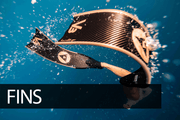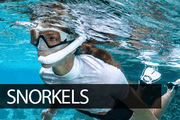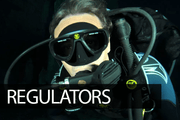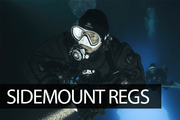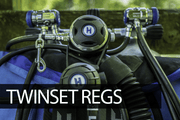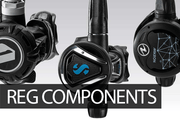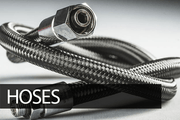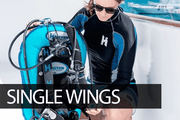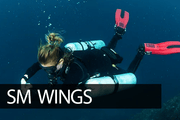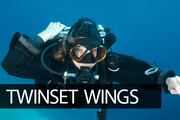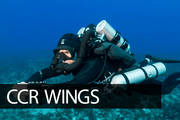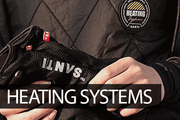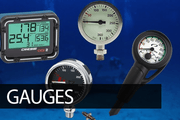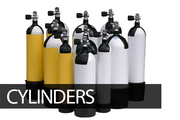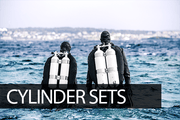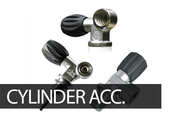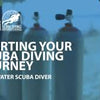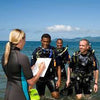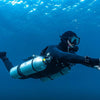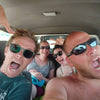Diving Sidemount vs. Twinset: A Balanced Comparison
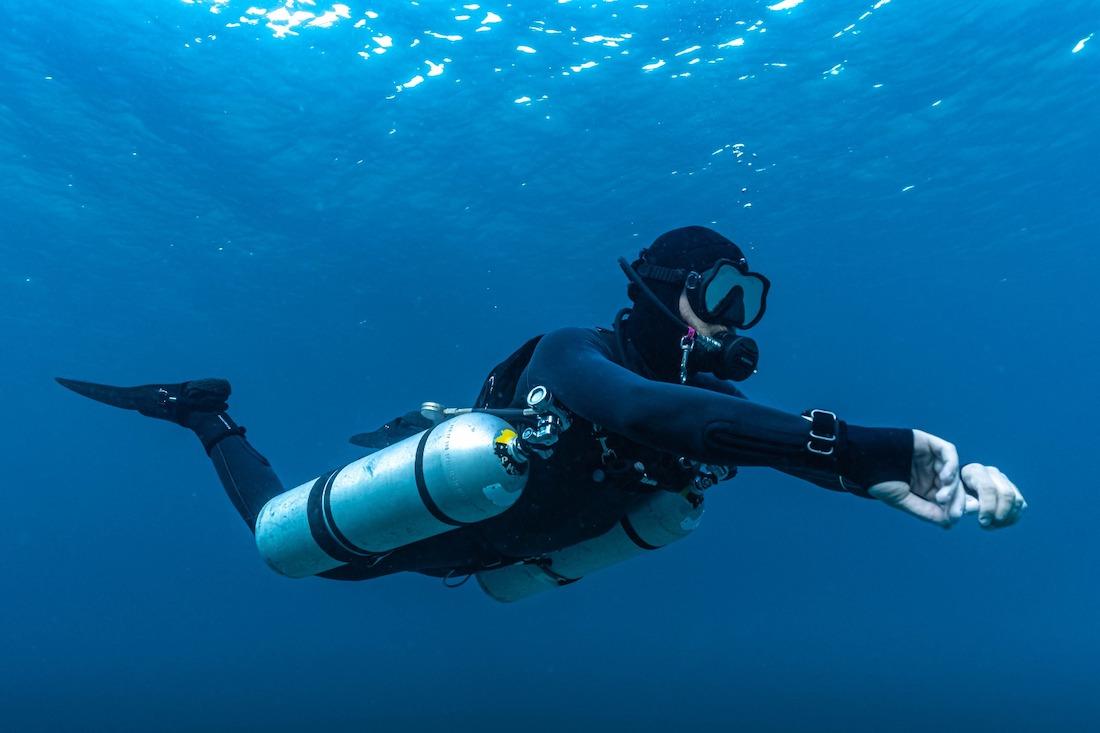
What is Twinset Diving?
Twinset diving, also known as backmount, involves mounting two cylinders on the diver's back using a double tank band or manifold system. This configuration has been a staple in technical diving, particularly for deep and extended range diving, due to its robustness and simplicity.
Features of Twinset Diving
- Cylinder Placement: Cylinders are mounted on the diver's back, connected by a manifold that allows for gas sharing between the tanks.
- Stable Configuration: The twinset setup provides a stable and balanced platform, ideal for maintaining horizontal trim and buoyancy.
- Increased Gas Supply: Twinsets typically use larger cylinders, providing a substantial gas supply for long or deep dives.
- Integrated Redundancy: The manifold system ensures that divers have access to both cylinders, even if one regulator fails, enhancing safety.
Benefits of Twinset Diving
- Extended Bottom Time: The larger gas capacity of twinsets allows for longer dive durations and deeper explorations, making them suitable for technical and decompression diving.
- Simplified Gas Management: With a manifold system, divers can easily manage their gas supply and switch regulators without complex procedures.
- Robustness and Reliability: Twinset configurations are known for their durability and reliability, especially in demanding conditions.
- Consistent Buoyancy and Trim: The backmount setup provides consistent buoyancy and trim, aiding in precise underwater navigation and stability.
Challenges of Twinset Diving
- Bulk and Weight: Twinsets can be heavy and cumbersome, especially out of the water. Transporting and handling the gear can be challenging for some divers.
- Limited Maneuverability: The backmounted cylinders can restrict movement and access to tight spaces, making them less suitable for cave and wreck diving.
- Initial Investment: The cost of twinset gear, including tanks, manifold, and BCD, can be higher compared to single cylinder setups.
- Physical Strain: Carrying twinsets can put additional strain on the diver's back and shoulders, potentially leading to discomfort or injury over time.
Ideal Applications for Twinset Diving
Twinset diving is particularly well-suited for the following scenarios:
- Deep Diving: The increased gas capacity and redundancy of twinsets make them ideal for deep diving where extended bottom times and multiple gas switches are required.
- Technical and Decompression Diving: Twinsets are commonly used in technical diving for their ability to carry multiple gas mixes and provide a robust redundancy system.
- Recreational Diving: While less common, twinsets can also be used in recreational diving for those who prefer the stability and gas capacity they offer.
- Expedition Diving: For long-range and expedition diving, twinsets provide the necessary gas supply and reliability to support extended dives in remote locations.
Sidemount vs. Twinset: Detailed Comparison
Equipment Setup and Configuration
Sidemount:
- Harness and BCD: Sidemount divers use a specialized harness and BCD designed to distribute the weight of the cylinders along the sides. These systems often feature multiple attachment points for customization.
- Cylinders: Cylinders are attached to the harness with clips and bungees, allowing for easy detachment and reattachment underwater.
- Regulators: Sidemount diving typically requires two independent regulators, one for each cylinder, providing redundancy and flexibility.
Twinset:
- Harness and BCD: Twinset divers use a backplate and wing system designed to support the weight of two backmounted cylinders. The harness includes a rigid backplate and a buoyancy wing.
- Cylinders: Cylinders are connected by a manifold, which allows for gas sharing between the tanks. The cylinders are mounted using double tank bands.
- Regulators: Twinset configurations use a primary regulator and an alternate regulator, both connected to the manifold, providing access to both cylinders.
Buoyancy and Trim
Sidemount:
- Buoyancy Control: Sidemount divers have the advantage of adjusting the position of their cylinders to fine-tune buoyancy and trim. This flexibility can result in improved horizontal trim and buoyancy control.
- Weight Distribution: Weights can be distributed more evenly across the harness, reducing strain on the back and enhancing comfort.
Twinset:
- Buoyancy Control: Twinset divers benefit from the stability provided by the backplate and wing system, which helps maintain consistent buoyancy and trim.
- Weight Distribution: The backmounted cylinders concentrate the weight on the diver's back, which can be beneficial for maintaining horizontal trim but may cause strain.
Maneuverability and Accessibility
Sidemount:
- Maneuverability: Sidemount configurations offer superior maneuverability, allowing divers to navigate through narrow passages and confined spaces with ease.
- Accessibility: The side-mounted cylinders provide easy access to valves and regulators, simplifying equipment checks and emergency procedures.
Twinset:
- Maneuverability: The backmounted cylinders can limit maneuverability, making it more challenging to navigate through tight spaces.
- Accessibility: Accessing valves and regulators can be more difficult in twinset configurations, requiring divers to reach behind their heads.
Gas Management and Redundancy
Sidemount:
- Independent Cylinders: Sidemount divers manage two independent gas supplies, offering built-in redundancy. If one regulator or cylinder fails, the diver can switch to the other.
- Flexible Gas Management: Divers can add or remove cylinders as needed, making it easier to manage gas supply and redundancy.
Twinset:
- Manifold System: Twinsets use a manifold system that allows gas sharing between the cylinders. This simplifies gas management and provides redundancy.
- Single Gas Source: The manifold system ensures that divers have access to both cylinders, even if one regulator fails, enhancing safety.
Training and Skill Requirements
Sidemount:
- Specific Training: Sidemount diving requires specialized training to master the configuration, buoyancy control, and equipment handling. Divers must practice managing multiple cylinders and switching regulators underwater.
- Skill Development: The flexibility and accessibility of sidemount setups can help divers develop better buoyancy control and trim.
Twinset:
- Familiarity: Twinset diving builds on the skills learned in single-cylinder diving, with additional training for managing the manifold system and redundancy.
- Skill Development: The stability and robustness of twinset configurations provide a solid platform for developing advanced diving skills, such as deep diving and decompression procedures.
Cost and Maintenance
Sidemount:
- Initial Investment: The cost of sidemount gear, including harness, BCD, and regulators, can be higher initially due to the specialized equipment required.
- Maintenance: Sidemount systems may require more frequent adjustments and maintenance to ensure optimal performance and comfort.
Twinset:
- Initial Investment: The cost of twinset gear, including cylinders, manifold, and backplate/wing system, can be significant. However, it is often comparable to the cost of sidemount setups.
- Maintenance: Twinset systems are generally robust and durable, requiring regular maintenance to ensure the manifold and regulators are functioning correctly.
Conclusion
Both sidemount and twinset configurations offer distinct advantages and challenges, making the choice between them dependent on the diver's preferences, diving objectives, and specific conditions. Sidemount diving excels in flexibility, maneuverability, and accessibility, making it ideal for cave, wreck, and technical diving. Twinset diving provides stability, increased gas capacity, and simplified gas management, making it suitable for deep, technical, and decompression diving.
Ultimately, the best configuration is the one that aligns with the diver's needs, experience level, and the diving environment. Divers should seek proper training and practice to master their chosen setup, ensuring safety and enjoyment in their underwater adventures. For a wide range of high-quality diving gear and training materials, visit Scuba Diving Gear. Whether you prefer sidemount or twinset, our comprehensive selection of equipment and resources will help you make the most of your diving experiences.

